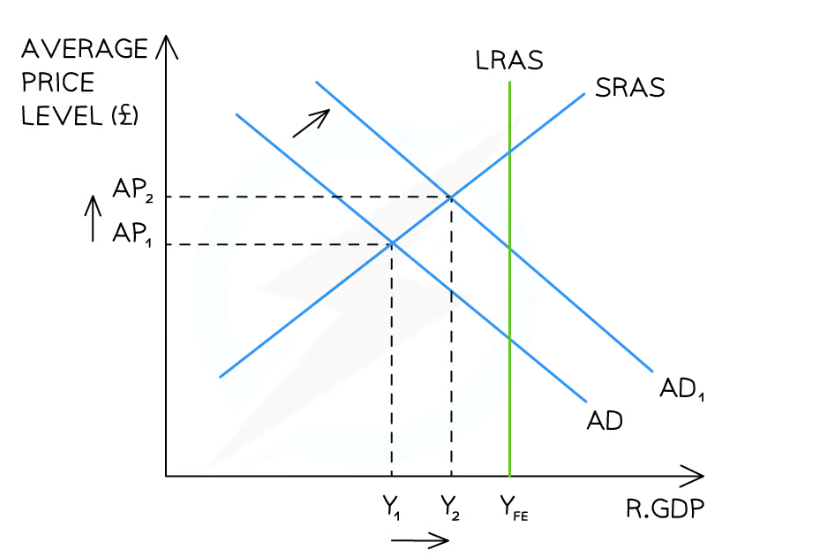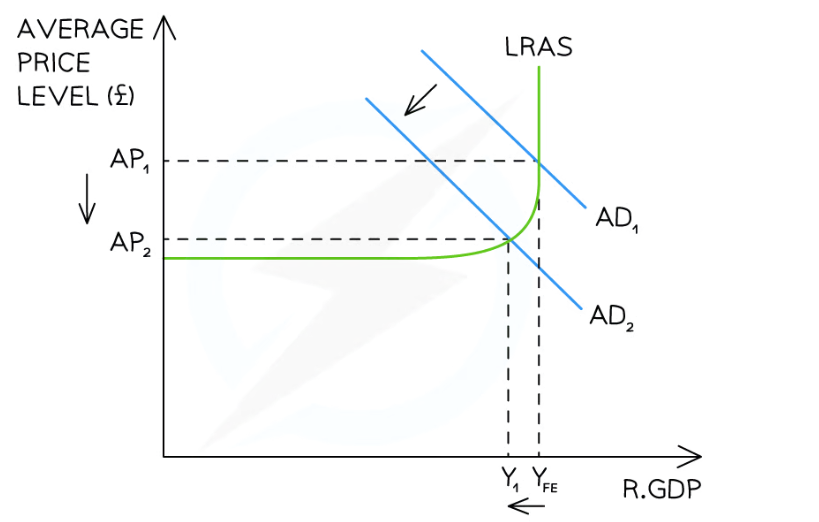1. Overview of Fiscal Policy
Definition: Fiscal policy refers to the use of government spending and taxation to influence the economy. It aims to manage aggregate demand, control inflation, and influence economic growth and employment.
Objectives:
- Economic Growth: Stimulate economic growth through increased government spending or tax cuts.
- Employment: Reduce unemployment by boosting aggregate demand.
- Inflation Control: Manage inflation by adjusting government spending and taxation.
- Redistribution: Achieve income redistribution and reduce inequality.
Instruments:
- Government Spending: Includes expenditures on goods and services, infrastructure, social programs, and transfers.
- Taxation: Includes changes in income tax rates, corporate taxes, and indirect taxes.
2. Expansionary Fiscal Policy
- Definition: Expansionary fiscal policy is used to increase aggregate demand and stimulate economic activity during periods of economic slowdown or recession.
Mechanisms:
- Increase in Government Spending: The Government increases its expenditures on projects, public services, and social programs. This directly boosts aggregate demand.
- Tax Cuts: Reducing taxes increases disposable income for consumers and profits for businesses, leading to higher consumption and investment.
Impact on the Economy:
- Aggregate Demand: Shifts the AD curve to the right, increasing output and reducing unemployment.
- Short-Run Effects: Can lead to higher GDP and lower unemployment rates.
- Long-Run Effects: May lead to inflationary pressures if the economy is near full capacity.
- Real-World Example: The U.S. stimulus packages during the COVID-19 pandemic aimed to boost economic activity through increased government spending and direct payments to individuals.
Expansionary Fiscal Policy Impact:

Credit to: savemyexams
3. Contractionary Fiscal Policy
- Definition: Contractionary fiscal policy is used to decrease aggregate demand and control inflation during periods of economic overheating or high inflation.
Mechanisms:
- Decrease in Government Spending: Reduction in government expenditures on public projects and services, which lowers aggregate demand.
- Tax Increases: Raising taxes reduces disposable income for consumers and profits for businesses, leading to lower consumption and investment.
Impact on Economy:

Credit to: savemyexams
Impact on the Economy:
- Aggregate Demand: Shifts the AD curve to the left, reducing output and curbing inflation.
- Short-Run Effects: Can lead to lower GDP and higher unemployment rates.
- Long-Run Effects: Helps to stabilize prices and prevent the economy from overheating.
- Real-World Example: The austerity measures implemented in Greece during the Eurozone crisis involved significant cuts in government spending and tax increases to reduce budget deficits and control inflation.
The Multiplier Effect
- Definition: The multiplier effect refers to the concept that an initial change in fiscal policy (such as government spending or tax cuts) will lead to a larger overall change in aggregate demand and national income.
Mechanism:
- Initial Increase in Spending: An increase in government spending or a tax cut leads to higher disposable income and consumption.
- Increased Consumption: The initial spending stimulates further consumption by households and businesses.
- Re-spending: The additional income generated leads to more spending, creating a ripple effect throughout the economy.
The Formula of Keynesian Multiplier:

Credit to: savemyexams
Where MPC is the Marginal Propensity to Consume.
Impact on the Economy:
- Higher Output: The multiplier effect amplifies the impact of fiscal policy on aggregate demand, leading to a larger increase in GDP than the initial change in spending or taxation.
- Variable Magnitude: The size of the multiplier effect depends on the marginal propensity to consume and the overall economic conditions.
- Real-World Example: During the Great Recession, increased government spending on infrastructure projects led to a larger overall increase in GDP due to the multiplier effect.
5. The Role of Fiscal Policy in Economic Stabilization
- Definition: Fiscal policy plays a crucial role in stabilizing the economy by mitigating the effects of economic fluctuations and maintaining overall economic stability.
Mechanisms:
- Automatic Stabilizers: Features of the fiscal system, such as progressive taxation and unemployment benefits, that automatically adjust to economic conditions and help stabilize aggregate demand without explicit government intervention.
- Discretionary Policy: Deliberate changes in government spending and taxation to influence economic activity and counteract economic cycles.
Impact on the Economy:
- Reducing Cyclicality: Fiscal policy helps to smooth out economic cycles by increasing spending during downturns and reducing it during booms.
- Promoting Stability: By adjusting fiscal policies, governments can help stabilize output and employment levels, preventing severe recessions and controlling inflation.
- Real-World Example: The role of unemployment benefits during economic downturns, which provide income support and stabilize aggregate demand without the need for new legislation.
6. The Limitations and Challenges of Fiscal Policy
- Definition: Fiscal policy, while a powerful tool for managing the economy, faces several limitations and challenges.
Limitations:
- Time Lags: Delays in recognizing economic conditions, formulating and implementing policies, and the actual impact on the economy.
- Crowding Out: Increased government spending may lead to higher interest rates, which can reduce private investment.
- Public Debt: Persistent deficits and debt accumulation can lead to higher future taxes or reduced government spending.
Challenges:
- Political Constraints: Fiscal policy decisions can be influenced by political considerations, which may not always align with optimal economic policy.
- Coordination with Monetary Policy: Effective fiscal policy requires coordination with monetary policy to avoid conflicting signals and achieve desired economic outcomes.
- Real-World Example: Japan’s prolonged fiscal deficits and high public debt levels have led to debates on the sustainability of its fiscal policies and their impact on economic growth.
